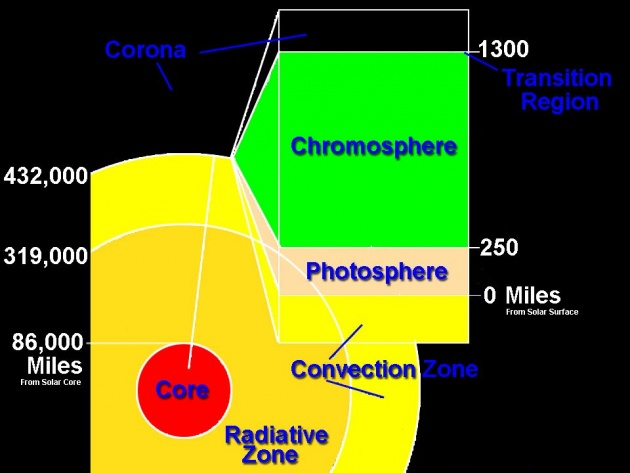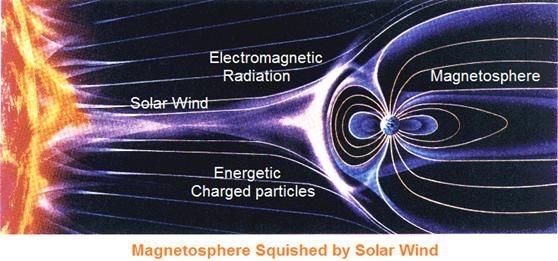SPACE AND SOLAR SYSTEM
(Part 14)
In previous some lecture we discuss about some facts about the Space and solar system and also discussed some characteristics related to this topic and in last lecture we study about the Sun’s Atmosphere which will discuss today as well. In last lecture we have study the Photosphere and Sunspots and in today’s lecture we will study about The Sun’s Winds, the Chromospheres and the Corona.
Firstly we will discuss the chromospheres and the corona and after on we will see the Solar winds. Because, the sun’s winds uses the chromospheres and the Corona related terms.
THE CHROMOSPHERES
The chromosphere is just above the visible photosphere. The chromospheres is a thin layer which is about approximately 1200 to 1900 mile or 2000 to 3000 km thick. The chromospheres temperature rises from 5510 C near the photosphere to about 9700C near the corona, temperatures such as those in the chromospheres. Hydrogen emits distinctive deep red color Calcium ions which are having one electron missing and produce distinctive radiation in the chromospheres. Calcium ions emit ultraviolet light or radiation with a wavelength just shorter than visible light.

At this time Sunspots expand from the photosphere into the chromospheres, creating even become darker spots on the chromospheres. Hot gas from the photosphere penetrates the chromospheres around the sunspots, creating bright regions called plagues.
THE CORONA
The corona layer is just above the chromospheres and it is very hot layer of the solar atmosphere. The Corona extends to Earth and beyond as the solar wind. The Sun’s temperature rises to 2 million degree C grade at the bottom of the corona. The temperature of Corona remains almost that hot as it reaches Earth.

Corona’s high temperature creates problems of solar physics. As we know that chromospheres and photosphere are closer to the Sun’s core than is the corona. The corona is several hundred times hotter than the chromospheres and photosphere. We know from the laws of thermodynamics that heat cannot move from a lower temperature area to a warmer area. According to the Scientists heat of the corona results from effects of the Sun’s magnetic fields instead of radiation from the Sun’s core.
THE SUN’S WINDS
The sun’s outermost part is a stream of particles that flow from the sun into the solar system. This type of flow from the Sun is called the solar wind. The solar wind extends all the way to the heliopause, far past the orbit of Pluto. The corona is so hot that it cannot stand still and expanding outward directions into space. We can see this phenomenon in the below diagram;

The sun is source of energy, due to the chemical reactions it exhaust the heat. We also know that due to its rotations it emits the solar wind, so the solar wind spirals around the solar system. The solar wind carries the Sun’s magnetic field with it and sets up a spiral magnetic field throughout the solar system. The solar wind and its magnetic field affect the magnetic fields of the planets, the direction of the tails of comets and even the flight paths of spacecraft.
That was the discussion related to the Sun’s atmosphere in further lecture we will study about Eclipse.



